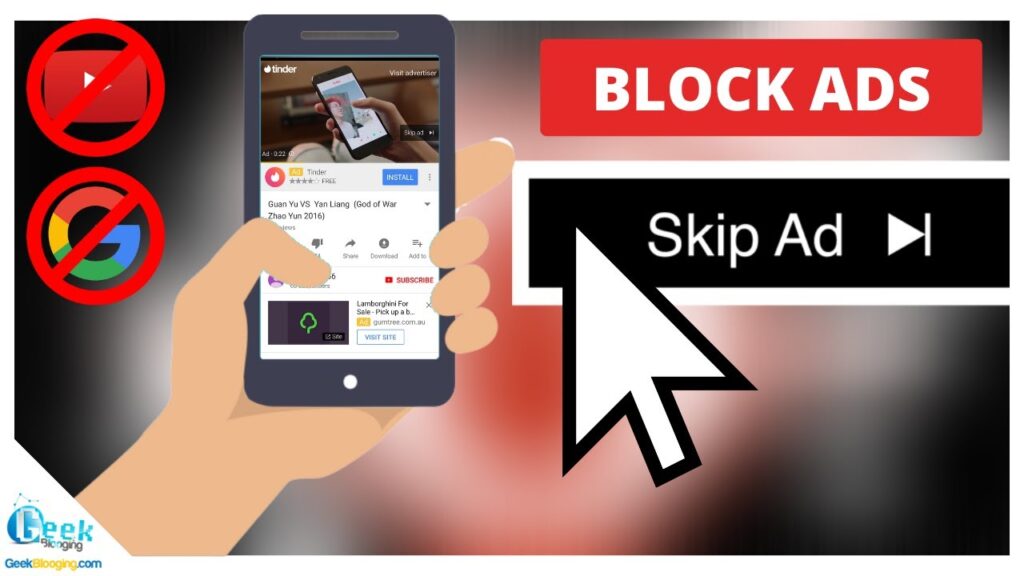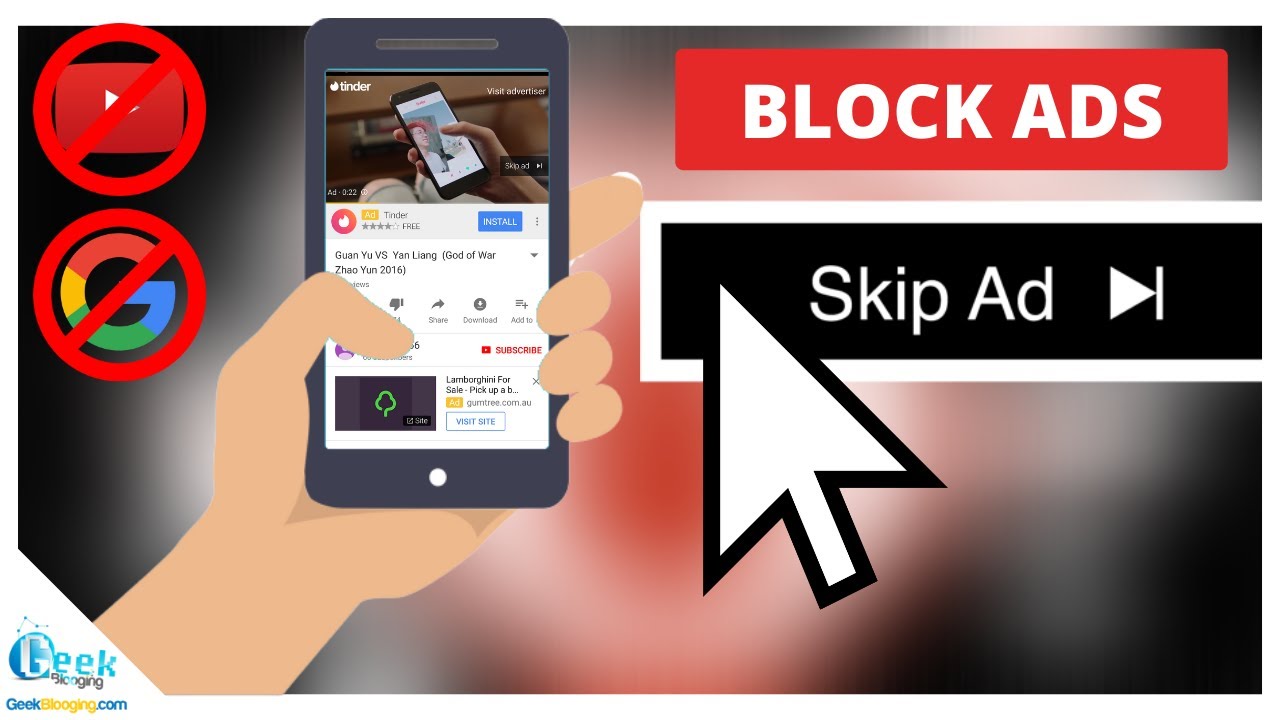
How to Block Ads on YouTube: A Comprehensive Guide
YouTube, the world’s largest video-sharing platform, has become an integral part of our daily lives. From entertainment and education to news and music, YouTube offers a vast array of content. However, one aspect that many users find disruptive is the prevalence of advertisements. These ads can interrupt the viewing experience, leading many to seek ways to block ads on YouTube. This guide provides a comprehensive overview of the various methods available to block ads on YouTube, exploring their effectiveness, legality, and potential drawbacks.
Why Block Ads on YouTube?
Before diving into the methods, it’s essential to understand why users are so eager to block ads on YouTube. Several factors contribute to this desire:
- Interruption: Ads often interrupt the flow of content, breaking the immersion and enjoyment of videos.
- Frequency: The frequency of ads can be overwhelming, especially during longer videos where multiple ad breaks are inserted.
- Relevance: Many users find the ads irrelevant or even offensive, leading to frustration.
- Data Consumption: Ads consume data, which can be a concern for users with limited or expensive data plans.
- Privacy Concerns: Some ads track user data, raising privacy concerns.
Methods to Block Ads on YouTube
Several methods can be used to block ads on YouTube, each with its own advantages and disadvantages.
Ad Blockers
Ad blockers are browser extensions or standalone applications designed to prevent ads from loading on websites, including YouTube. They work by filtering out ad-serving scripts and blocking requests to ad servers.
Popular Ad Blockers:
- AdBlock: One of the most widely used ad blockers, available for Chrome, Firefox, and Safari.
- Adblock Plus: Another popular option, offering customizable filters and whitelisting options.
- uBlock Origin: A lightweight and efficient ad blocker known for its low resource consumption.
- Privacy Badger: Focuses on blocking trackers and privacy-invading ads.
How to Use Ad Blockers:
- Install the ad blocker extension from your browser’s extension store.
- Enable the extension.
- Visit YouTube and enjoy ad-free viewing.
Pros:
- Effective at blocking most ads.
- Easy to install and use.
- Available for various browsers.
Cons:
- Some websites may detect ad blockers and prevent content from loading.
- Ad blockers can sometimes interfere with website functionality.
- YouTube actively works to circumvent ad blockers, leading to a constant cat-and-mouse game.
YouTube Premium
YouTube Premium is YouTube’s official subscription service, offering ad-free viewing, background playback, and access to YouTube Music Premium. While it requires a paid subscription, it provides a seamless and legal way to block ads on YouTube.
Benefits of YouTube Premium:
- Ad-Free Viewing: Watch all YouTube videos without any ads.
- Background Playback: Continue playing videos in the background while using other apps or when your screen is off.
- YouTube Music Premium: Access ad-free music streaming and offline downloads.
- YouTube Originals: Watch exclusive content created by YouTube.
How to Subscribe to YouTube Premium:
- Visit the YouTube website or app.
- Click on your profile picture and select “YouTube Premium.”
- Choose a subscription plan and follow the instructions to complete the purchase.
Pros:
- Legal and ethical way to block ads on YouTube.
- Supports content creators.
- Provides additional features like background playback and YouTube Music Premium.
Cons:
- Requires a paid subscription.
- Can be expensive for some users.
VPNs with Ad-Blocking Features
Some Virtual Private Networks (VPNs) offer built-in ad-blocking features. These VPNs can block ads on YouTube and other websites by routing your internet traffic through servers that filter out ad-serving requests.
Popular VPNs with Ad-Blocking:
- NordVPN: Offers CyberSec feature that blocks ads and malware.
- Surfshark: Includes CleanWeb feature to block ads and trackers.
- Private Internet Access (PIA): MACE feature blocks ads at the DNS level.
How to Use a VPN with Ad-Blocking:
- Subscribe to a VPN service with ad-blocking features.
- Download and install the VPN app on your device.
- Connect to a VPN server.
- Enable the ad-blocking feature in the VPN app settings.
- Visit YouTube and enjoy ad-free viewing.
Pros:
- Provides additional security and privacy.
- Blocks ads on all websites and apps, not just YouTube.
- Can bypass geographical restrictions.
Cons:
- Requires a paid subscription.
- Can slow down internet speed.
- Not all VPNs offer effective ad-blocking.
DNS-Based Ad Blocking
DNS-based ad blocking involves using a custom DNS server that filters out ad-serving domains. This method works by preventing your device from resolving the domain names of ad servers, effectively block ads on YouTube and other websites.
Popular DNS Ad Blockers:
- AdGuard DNS: Offers free and paid DNS servers that block ads and trackers.
- Cloudflare 1.1.1.1: Provides a fast and private DNS service with optional ad blocking.
- NextDNS: A customizable DNS service that allows you to block ads, trackers, and malware.
How to Use DNS-Based Ad Blocking:
- Access your device’s network settings.
- Change the DNS server settings to use the DNS ad blocker’s addresses (e.g., AdGuard DNS).
- Save the changes and restart your device.
- Visit YouTube and enjoy ad-free viewing.
Pros:
- Blocks ads on all devices connected to the network.
- No software installation required.
- Can improve internet speed.
Cons:
- Requires technical knowledge to configure.
- May not block all ads.
- Can affect website functionality.
Browser Settings and Extensions
Some browsers offer built-in ad-blocking features or allow you to install extensions that block ads on YouTube. While these methods may not be as effective as dedicated ad blockers, they can provide a basic level of ad blocking.
Browser Settings:
- Brave Browser: Brave has a built-in ad blocker that blocks ads and trackers by default.
- Firefox: Firefox allows you to enable tracking protection, which can block some ads.
Browser Extensions:
- AdBlock for YouTube: A dedicated ad blocker for YouTube, available for Chrome and Firefox.
- YouTube Ad Blocker: Blocks pre-roll and banner ads on YouTube.
How to Use Browser Settings and Extensions:
- Enable the built-in ad blocker in your browser settings (if available).
- Install an ad-blocking extension from your browser’s extension store.
- Configure the extension settings as needed.
- Visit YouTube and enjoy ad-free viewing.
Pros:
- Easy to use.
- No additional software installation required (for built-in features).
- Can improve browsing speed.
Cons:
- May not block all ads.
- Can interfere with website functionality.
- YouTube actively works to circumvent ad blockers.
The Legality and Ethics of Blocking Ads
While block ads on YouTube is technically legal, it raises ethical considerations. YouTube and its content creators rely on ad revenue to sustain the platform and produce content. By blocking ads, you are depriving them of this revenue.
Ethical Considerations:
- Supporting Content Creators: Ads provide a way for content creators to earn money from their videos. By blocking ads, you are reducing their income.
- Sustainability of YouTube: Ad revenue helps YouTube maintain its infrastructure and invest in new features. Blocking ads can impact the platform’s sustainability.
- Alternative Ways to Support Creators: Consider supporting your favorite creators through Patreon, channel memberships, or direct donations.
YouTube’s Efforts to Combat Ad Blocking
YouTube actively works to detect and circumvent ad blockers. The platform employs various techniques to identify users who are blocking ads and may take actions such as:
- Displaying Warning Messages: YouTube may display a message asking you to disable your ad blocker.
- Blocking Video Playback: YouTube may prevent you from watching videos if you continue to use an ad blocker.
- Serving More Intrusive Ads: YouTube may serve more frequent or longer ads to users who are blocking ads.
This ongoing cat-and-mouse game between YouTube and ad blocker developers means that the effectiveness of ad blockers can fluctuate over time.
Conclusion
Block ads on YouTube can significantly improve the viewing experience, but it’s essential to consider the ethical implications and potential drawbacks. While ad blockers, VPNs, and DNS-based ad blocking can be effective, YouTube Premium offers a legal and sustainable solution that supports content creators and the platform itself. Ultimately, the choice of whether to block ads on YouTube depends on your personal preferences and priorities. Remember to explore all available options and choose the method that best suits your needs. Weigh the pros and cons of each approach, and consider supporting your favorite creators through alternative means to ensure the continued availability of high-quality content on YouTube. [See also: YouTube Premium Benefits] [See also: Best Ad Blockers for Chrome] [See also: How to Support YouTube Creators]

